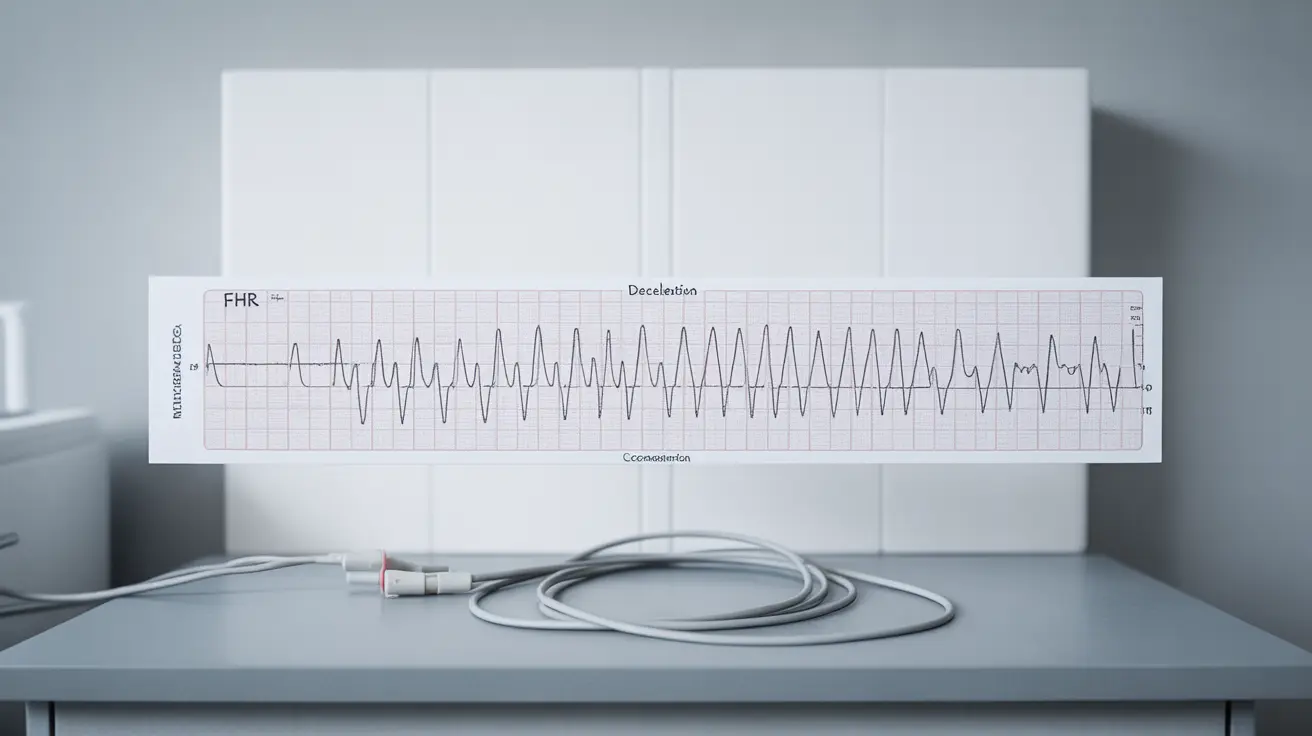During labor and delivery, monitoring the baby's heart rate provides crucial information about their well-being. Variable decelerations in fetal heart rate are common occurrences that healthcare providers carefully watch. Understanding these patterns helps ensure safer deliveries and better outcomes for both mother and baby.
This comprehensive guide explores what variable decelerations are, their causes, potential impacts on the baby, and how medical professionals manage them during labor.
What Are Variable Decelerations?
Variable decelerations are temporary decreases in the baby's heart rate during labor that can vary in timing, depth, and duration. These changes typically appear as V-shaped dips on fetal monitoring strips and often occur in relation to uterine contractions.
These heart rate changes are most commonly caused by temporary compression of the umbilical cord, which can happen as the baby moves through the birth canal or when the cord becomes positioned in a way that allows it to be squeezed during contractions.
Causes and Risk Factors
Several factors can contribute to variable decelerations during labor:
- Umbilical cord compression
- Changes in the baby's position
- Reduced amniotic fluid (oligohydramnios)
- Loop or knot in the umbilical cord
- Cord prolapse in rare cases
Understanding these causes helps healthcare providers determine appropriate interventions and monitoring strategies during labor.
Impact on Fetal Well-being
While many variable decelerations are considered normal during labor, their severity and frequency can indicate potential concerns:
- Mild decelerations: Usually well-tolerated by the baby
- Moderate decelerations: May require closer monitoring
- Severe or frequent decelerations: Could indicate fetal distress
Healthcare providers assess these patterns alongside other vital signs to ensure the baby's safety throughout labor.
Management and Treatment Approaches
When variable decelerations are detected, several interventions may be implemented:
- Position changes for the mother
- Oxygen supplementation
- Increased IV fluid administration
- Temporary suspension of labor-inducing medications
- Emergency cesarean delivery in severe cases
The choice of intervention depends on the severity of decelerations, stage of labor, and overall fetal status.
Monitoring and Assessment
Healthcare providers use sophisticated fetal monitoring equipment to track these heart rate changes. They look for specific characteristics including:
- Timing in relation to contractions
- Depth of the deceleration
- Recovery time to baseline
- Associated changes in baseline variability
Frequently Asked Questions
What causes variable decelerations in fetal heart rate during labor?
Variable decelerations are primarily caused by temporary compression of the umbilical cord during labor. This can occur due to the baby's movement, cord positioning, or uterine contractions.
How can variable decelerations in fetal heart rate affect the baby's well-being?
While mild variable decelerations are usually well-tolerated, severe or frequent decelerations can potentially impact oxygen delivery to the baby. Healthcare providers monitor these patterns closely to ensure the baby isn't experiencing significant stress.
What treatments are used to manage variable decelerations caused by umbilical cord compression?
Management typically includes maternal position changes, oxygen supplementation, IV fluid administration, and sometimes temporary cessation of labor-inducing medications. In severe cases, emergency cesarean delivery may be necessary.
When should variable decelerations in fetal heart rate be considered a sign of fetal distress?
Variable decelerations become concerning when they are severe (showing significant drops in heart rate), frequent, or accompanied by other concerning patterns such as decreased baseline variability or tachycardia.
How do variable decelerations differ from early and late decelerations on fetal heart monitoring?
Variable decelerations differ in their timing and appearance. Unlike early and late decelerations, which have consistent timing relationships with contractions, variable decelerations can occur at any time and vary in shape, depth, and duration.




